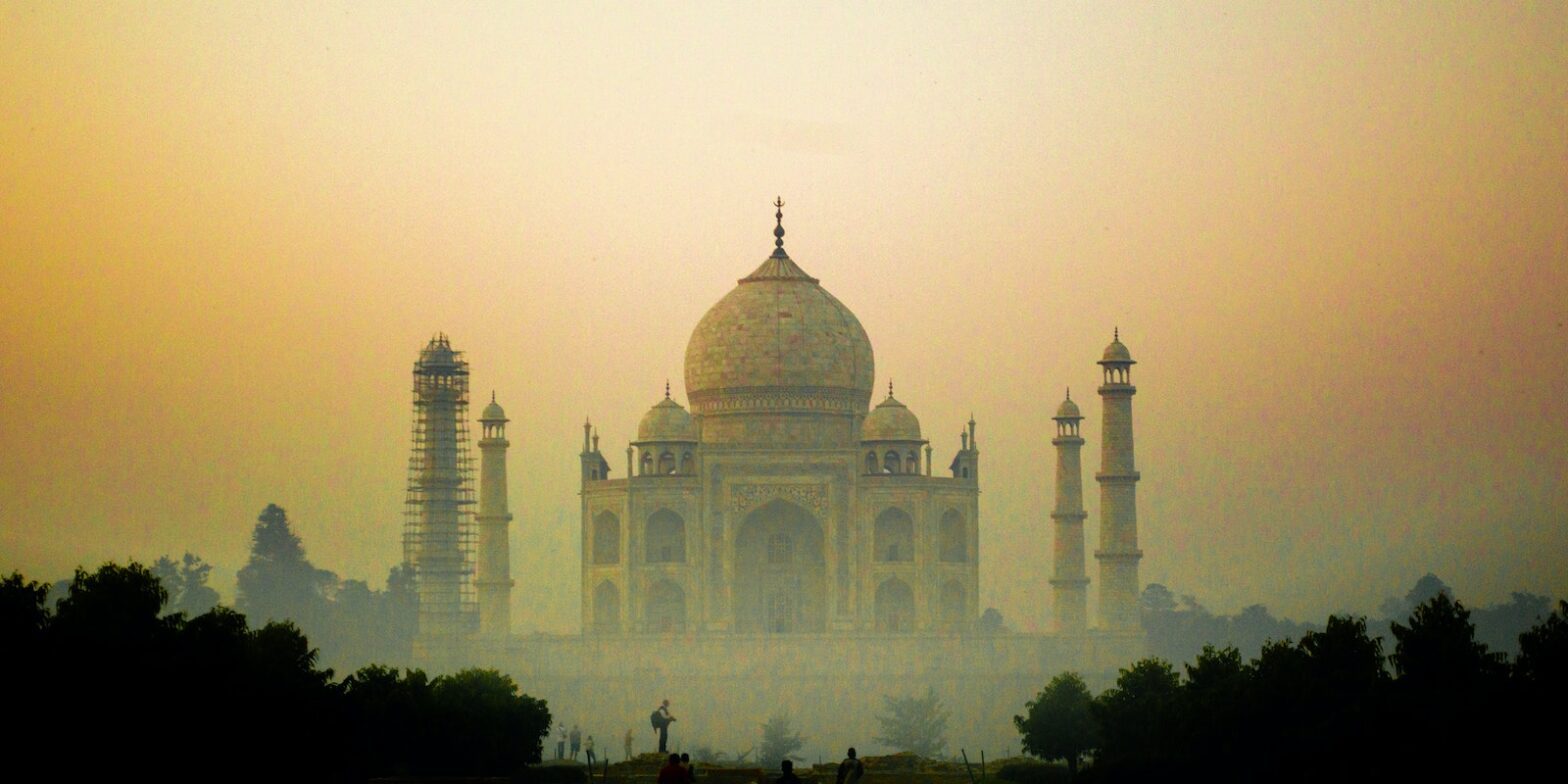The Best Guide to a Round Trip Driver from Jaipur to Taj Mahal

Introduction
Jaipur and the Taj Mahal are two iconic destinations in India that attract travelers from all over the world. Jaipur, the capital of the vibrant state of Rajasthan, is known as the “Pink City” due to its pink-hued architecture. It is a city steeped in history, boasting magnificent palaces, grand forts, and bustling markets. Jaipur is famous for its architectural marvels such as the Hawa Mahal, Amer Fort, City Palace, and the Jantar Mantar observatory. The city offers a rich cultural experience, with colorful festivals, traditional handicrafts, and delectable Rajasthani cuisine.
The Best Guide to A round trip Driver from Jaipur to the Taj Mahal offers convenience and flexibility for travelers. The distance between Jaipur and the Taj Mahal is approximately 240 kilometers, and the drive takes around 4-5 hours, depending on the chosen route and traffic conditions.
On the other hand, the Taj Mahal stands as a symbol of eternal love and is one of the Seven Wonders of the World. Located in Agra, Uttar Pradesh, it is a masterpiece of Mughal architecture and a UNESCO World Heritage site. The Taj Mahal was built by Emperor Shah Jahan as a mausoleum for his beloved wife Mumtaz Mahal. Its pristine white marble façade, intricate carvings, and stunning gardens leave visitors awe-struck. The Taj Mahal’s mesmerizing beauty and historical significance make it a must-visit destination for anyone traveling to India.
The Best Guide to A round trip Driver from Jaipur to the Taj Mahal offers convenience and flexibility for travelers. The distance between Jaipur and the Taj Mahal is approximately 240 kilometers, and the drive takes around 4-5 hours, depending on the chosen route and traffic conditions. Opting for a round trip driver allows visitors to set their own pace, explore the attractions en route, and have the freedom to spend as much time as desired at each destination.
Both Jaipur and the Taj Mahal hold immense historical and cultural significance. Jaipur, founded in 1727, showcases the architectural brilliance of the Rajput rulers. The palaces and forts reflect the opulence and grandeur of the bygone era. The city’s rich cultural heritage can be witnessed through its lively festivals, traditional dances like Ghoomar, puppet shows, and folk music performances.
Similarly, the Taj Mahal is a testament to the Mughal dynasty’s architectural mastery and their love for art. It is a harmonious blend of Persian, Islamic, and Indian architectural styles. Beyond its architectural splendor, the Taj Mahal represents a poignant love story and serves as a symbol of eternal love and devotion.
Visiting both Jaipur and the Taj Mahal offers an immersive experience of India’s royal past and the country’s rich cultural tapestry. From the vibrant streets of Jaipur to the ethereal beauty of the Taj Mahal, this round-trip drive unveils the historical and cultural treasures of India, leaving travelers with unforgettable memories.
Route and Itinerary
Route options for a round trip driver from Jaipur to the Taj Mahal offer travelers the flexibility to choose the most suitable path based on their preferences and time constraints. One popular route is via the NH21 and NH248A, which take you through the cities of Dausa, Bharatpur, and Mathura. This route offers relatively smooth roads and allows you to visit the Keoladeo National Park in Bharatpur, famous for its bird sanctuary. Another option is to take NH11 and NH44, passing through Alwar, Bharatpur, and Mathura.
This route offers a chance to visit the Sariska Tiger Reserve in Alwar, known for its wildlife and scenic landscapes. The route options provide travelers with opportunities to explore additional attractions while en route to the Taj Mahal.
For a recommended itinerary, a four-day plan offers a well-paced journey. Day 1 can be dedicated to exploring the attractions of Jaipur, such as the City Palace, Hawa Mahal, and Amber Fort. On Day 2, begin the drive from Jaipur to the Taj Mahal, with a stop at Bharatpur to visit the Keoladeo National Park, known for its avian diversity.
Continue the drive to Agra, where you can witness the Taj Mahal at sunset. Day 3 can be fully dedicated to exploring Agra, including a visit to the Agra Fort, Itmad-ud-Daulah’s Tomb, and Mehtab Bagh for a different perspective of the Taj Mahal. On Day 4, return to Jaipur, with a stop at Fatehpur Sikri, a UNESCO World Heritage site known for its stunning architecture and historical significance.
The distance between Jaipur and the Taj Mahal is approximately 240 kilometers (149 miles). Travel time can vary depending on factors like traffic and road conditions. On average, the drive takes around 4-5 hours, allowing for a comfortable journey with breaks and sightseeing stops along the way. It’s important to plan for additional time if visiting attractions like Keoladeo National Park or Fatehpur Sikri. Being aware of the distance and estimated travel times helps in scheduling the itinerary and ensuring a well-managed round-trip drive from Jaipur to the Taj Mahal.
Places of Interest
During the round-trip drive from Jaipur to the Taj Mahal, there are several noteworthy attractions to explore along the way. One of the prominent en-route attractions is Fatehpur Sikri, a historical city located approximately 40 kilometers (25 miles) west of Agra. Fatehpur Sikri is known for its stunning architecture and was once the capital of the Mughal Empire. Visitors can explore the intricately designed buildings, including the Buland Darwaza, Jama Masjid, and the exquisite palaces of the royal complex.
The UNESCO World Heritage site offers a glimpse into the grandeur of Mughal architecture and its historical significance.
Another remarkable stop is the Abhaneri Stepwells, located in the village of Abhaneri, roughly 95 kilometers (59 miles) from Jaipur. These ancient step-wells, known as Chand Baori, are architectural marvels with intricate patterns and geometric designs.
The stepwell is composed of multiple levels and is a fascinating example of water conservation and architectural brilliance. Visitors can descend the steps and admire the symmetrical beauty of the structure. The Abhaneri Stepwells provide a unique glimpse into India’s historical water management systems and serve as a captivating photo opportunity
Once in Agra, travelers can delve into the rich history and grandeur of the city. The Taj Mahal, undoubtedly the highlight of Agra, captivates with its majestic beauty. As one of the New Seven Wonders of the World, the ivory-white marble mausoleum is a symbol of eternal love. A visit to the Taj Mahal during sunrise or sunset is particularly breathtaking, as the changing colors of the sky enhance the monument’s ethereal charm.
Additionally, Agra Fort, a UNESCO World Heritage site, offers a glimpse into the Mughal era with its impressive architecture, palaces, and courtyards. Other notable attractions in Agra include Itmad-ud-Daulah’s Tomb, often referred to as the “Baby Taj,” and Mehtab Bagh, a riverside garden providing picturesque views of the Taj Mahal.
In Jaipur, the Pink City, there is an abundance of attractions to explore. The Hawa Mahal, or Palace of Winds, is an iconic architectural gem known for its unique honeycomb-like structure and numerous windows. The Amber Fort, situated on a hilltop, offers panoramic views of the city and showcases the grandeur of Rajput architecture.
The City Palace, the residence of the Jaipur royal family, is a magnificent complex featuring palaces, courtyards, museums, and gardens. Jantar Mantar, an astronomical observatory, displays a collection of architectural instruments used to measure time, predict eclipses, and observe celestial bodies.
These attractions along the Jaipur-to-Taj-Mahal route provide an enriching experience, combining historical marvels, architectural brilliance, and cultural heritage. Travelers have the opportunity to witness the grandeur of Fatehpur Sikri and the Abhaneri Stepwells, immerse themselves in the timeless beauty of the Taj Mahal and Agra Fort, and explore the regal charm of Jaipur’s architectural wonders.
Cultural and Historical Significance
Historical Background:
The Taj Mahal stands as a testament to the rich history of the Mughal Empire in India. Construction of the Taj Mahal began in 1632 and took approximately 20 years to complete, with the efforts of thousands of skilled craftsmen and artisans. The architectural design of the Taj Mahal is a remarkable blend of Persian, Islamic, and Indian influences. Its white marble facade is adorned with intricate carvings, calligraphy, and inlaid precious and semi-precious stones.
The main dome, surrounded by four smaller domes, is an architectural marvel, while the meticulously designed gardens and reflecting pool further enhance the overall grandeur of the structure. The Taj Mahal’s historical significance lies not only in its architectural beauty but also in its symbolism of love and devotion, making it an enduring symbol of India’s rich cultural heritage.
Cultural Insights:
Jaipur and Agra offer a glimpse into the vibrant cultural heritage of India. Jaipur, the Pink City, is known for its vibrant festivals, traditional arts and crafts, and warm hospitality. The city has a rich Rajputana culture, with locals still practicing age-old traditions and customs. The colorful attire, especially during festivals like Diwali and Holi, adds to the cultural charm of the city. Agra, on the other hand, has a strong Mughal influence reflected in its architecture, cuisine, and traditions.
The city is renowned for its delicate marble inlay work known as “pietra dura” and intricate handicrafts. Agra’s cuisine offers a fusion of flavors from Mughlai and regional cuisines, with iconic dishes such as petha (a sweet made from ash gourd) and Mughlai biryani being local specialties.
Both cities provide opportunities to witness traditional dances, music performances, and puppet shows that showcase the cultural vibrancy of the region. Exploring the local markets in Jaipur and Agra allows visitors to experience the craftsmanship of local artisans, with markets offering an array of textiles, jewelry, handicrafts, and souvenirs.
The Taj Mahal, Jaipur, and Agra are not only architectural wonders but also gateways to India’s rich cultural heritage. They offer insights into the historical narratives, artistic brilliance, and diverse traditions of the country. Visitors can immerse themselves in the captivating history of the Taj Mahal while experiencing the vibrant cultural fabric of Jaipur and Agra through their traditions, crafts, cuisine, and warm hospitality.
Conclusion
The round trip from Jaipur to the Taj Mahal offers an unforgettable journey through two iconic destinations in India. Starting from the vibrant city of Jaipur, with its magnificent palaces, forts, and rich cultural heritage, travelers embark on a scenic drive toward the Taj Mahal in Agra. Along the way, en-route attractions such as Fatehpur Sikri and the Abhaneri Stepwells provide glimpses into the historical and architectural splendors of the region.
Exploring the Taj Mahal, a masterpiece of Mughal architecture and an eternal symbol of love, is a profound experience. Its ethereal beauty, intricate craftsmanship, and serene ambiance leave visitors in awe. The city of Agra, with its majestic Agra Fort, Itmad-ud-Daulah’s Tomb, and Mehtab Bagh, complements the grandeur of the Taj Mahal, visiting Agra a truly enriching cultural journey.
PHOTO BY: PEXELS
ALSO READ: Best Personal Car Driver in Jaipur for a Two-Day Outstation Trip




